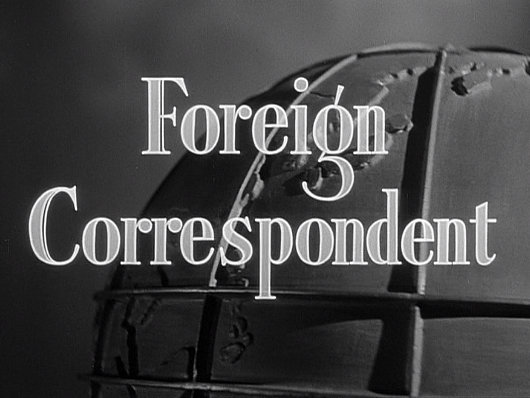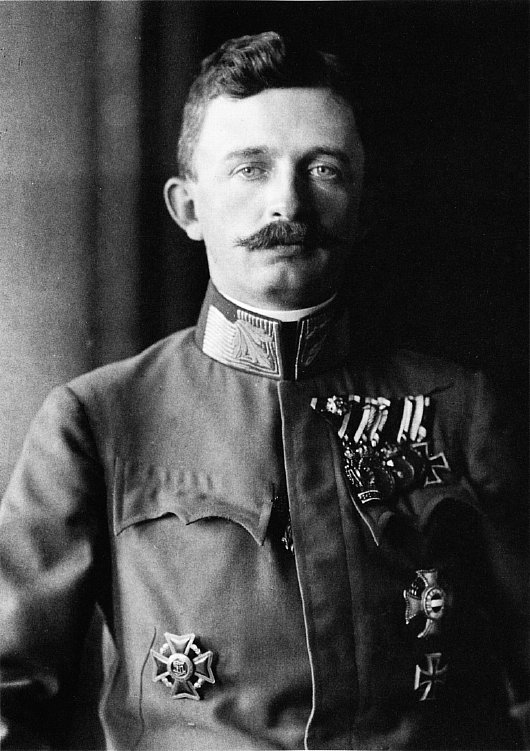Cinema
About Andrew Cusack
 Writer, web designer, etc.; born in New York; educated in Argentina, Scotland, and South Africa; now based in London.
Writer, web designer, etc.; born in New York; educated in Argentina, Scotland, and South Africa; now based in London. read more
News
Blogs
Reviews & Periodicals
Arts & Design
World
France
Mitteleuropa
Knickerbockers
Argentina
The Levant
Africa
Cape of Good Hope
Netherlands
Scandinavia
Québec
India
Muscovy
Germany
Academica
Sag Harbor Cinema
For a film fan, to grow up in an American town with a small cinema is to win the lottery of life.
In my childhood, we had the advantage of two little movie houses within walking distance: the three-screen Bronxville Cinema and just a little bit further afield by foot the single-screen Pelham Picture House.
Fittingly, these two are now run together as the somewhat pretentiously titled but no-doubt quite useful ‘Picture House Regional Film Center’.
Way out on the South Fork of Long Island, the old whaling village of Sag Harbor has the perfect little small-town American movie theatre.
There is something just right about this cinema on the village’s Main Street — as Variety put it: “beloved for not only its obscure programming but also its 1930s red neon sign with the village name”.

The single-screen cinema first graced the main drag of the village in 1936, the creation of architect John Eberson whose ‘atmospheric’ movie theatres are dotted across the United States and even as far as Australia.
Eberson designed two of greater New York’s five Loews ‘Wonder Theatres’: the Loew’s Paradise on the Grand Concourse in the Bronx neighbourhood of Fordham and the Loew’s Valencia in Jamaica, Queens.
This cinema was purchased by Gerard Mallow in 1978 who for nearly four decades preserved the Sag Harbor Cinema as an arthouse movie theatre with an eclectic offering.

In December 2016, the cinema suffered a devastating early morning fire that destroyed most of the structure.
The iconic neon signage was salvaged by Chris Denon of North Fork Moving and Storage and the sculptor and ironworker John Battle.
Meanwhile, a community partnership that was already in discussions to purchase the institution from Mr Mallow came together to raise funds and oversee the rebuilding, including several improvements.

The main hall was divided between a large screening hall and a smaller one, along with a new screening room on the first floor (that’s second in American English) behind the iconic façade.


The artist Carl Bretzke captured Sag Harbor’s cinema in plein-air painted form.
Encouraged by the Grenning Gallery, Bretzke offered limited-edition prints of his painting, the proceeds of which helped to pay for reconstructing the movie theatre.



NK Architects also created a new bar and lounge, two roof terraces, an art gallery, and educational space within the original footprint of the cinema.
Following coronavirus-related delays, the new facility finally re-opened in June 2021.





Given the improvement in the facilities, it seems like the Sag Harbor Cinema’s fire was the best thing to ever happen to it.
It is reassuring to know this little movie theatre will be gracing Sag Harbor’s Main Street for many moons to come.

The Year in Film: 2024
I love a trip to the cinema and since 2021 we’ve had an Everyman cinema here in God’s Own Borough of Southwark, smack dab in the heart of Borough Market — a great boon for us locals.
We already have the BFI (and its IMAX) next door on the South Bank, but the comfort and quality of an Everyman is well worth the price of the ticket. (Sadly, this website is not yet sponsored by the Everyman corporation, but we are open to such possibilities.)
I thought a brief overview of most-but-not-all the films I managed to see on the big screen in anno domini 2024 was worthwhile, so here goes:

The Boys in the Boat (USA, 124 min) — Who can say no to a good old-fashioned American feel-good film? And a rowing film, at that. Excellent recreation of the 1930s and a nice beat-the-Nazis true story. (Caveat: In a brief moment, they got the name of Jesse Owens’ university wrong.)

The Holdovers (USA, 133 min) — It’s been a while since we had a decent New England boarding school film. A pupil neglected by his parents is forced to stay at school over the Christmas holiday, with an equally forced teacher resenting his presence.
Teenager Dominic Sessa is excellent in his first film role — he was allowed to audition as they were filming at his school, Deerfield — but the real star is Da’Vine Joy Randolph as the school cook.

Interstellar (USA, 169 min) — This 2014 film from director Christopher Nolan is vast in its vision. BIG. An intriguing reflection on the love of a family and the fallen nature of even the bravest individuals that revives the neglected genre of cosmic dread. Ideal for IMAX which it was re-released on for its tenth anniversary. Nolan doesn’t disappoint.

Oppenheimer (USA, 180 min) — Nor did Nolan disappoint here. This film didn’t feel nearly as long as it was, but it was beautifully captivating. I was surprised that my filmgoing companion, who has the attention span of a small child, was seeing it for her second time; I was even tempted to give it a second viewing myself (but didn’t). Top-notch film score from Ludwig Göransson, as well. ‘Oppenheimer’ was serious without being tiresome.

The Fall Guy (USA, 126 min) — A stunt double in love with his beautiful colleague is unwittingly embroiled in a conspiracy to cover up an accidental death on the set of her directorial debut.
The light-hearted framework of an incredibly charming romance nonetheless has some cracking action scenes. Anyone who’s ever been in love should enjoy this film. Emily Blunt was brilliant but Hannah Waddingham is the surprise of the show.
This one I did see twice in the cinema — a first since the film-of-the-decade ‘Top Gun: Maverick’. We need more films as delightful as this.

Fly Me to the Moon (USA, 132 min) — An advertising executive (Scarlett Johansson) and the NASA launch director (Channing Tatum) are forced fake the moon landings — just in case — by shadowy forces of the state (Woody Harrelson). Silly and fun.

Ne le dis à personne / Tell No One (France, 131 min) — This might be my favourite film and I probably watch it every year or so. A doctor whose wife was murdered eight years previous may finally be implicated in her murder — until a cryptic email arrives in his inbox suggesting she might still be alive. He must move heaven and earth to evade the police, find his wife, and prove his innocence.
Released in 2006, ‘Ne le dis à personne’ is the perfect blend of thriller, action, intrigue, romance, and it has Kristin Scott Thomas. What more could you want? It gratuitously adds to that with performances from François Cluzet, the amazing Jean Rochefort (RIP), Nathalie Baye, and André Dussollier.
While based on a book by Harlan Coben, the director Guillaume Canet changed the ending: the writer said the director’s conclusion was better than his. Not a perfect film — there were one or two things I would have done slightly differently — but an expertly crafted one all the same.

The Count of Monte Cristo (France, 178 min) — I’ve read the book three times and each experience has hit differently. This adaptation was watchable but flawed. The main actor lacked gravitas and it’s a tad overproduced.
The 1998 Depardieu miniseries remains the standard. Apparently we’re getting an Italian-French co-produced miniseries sometime this year but it looks disappointing, too.
Might be time to read the book again.

Ghostbusters (USA, 105 min) — What a delight this film is. Impossibly silly, deeply enjoyable, and — from the opening scenes at Columbia University and the New York Public Library — one of the most New Yorker films ever. (“Ghostbusters, whaddya want.”) It even features a cardinalatial nod of approval.
A film like this is always best in the cinema. I think ‘Ghostbusters’ may have been the first movie I ever saw in a cinema: in the movie theatre in Edgartown on Martha’s Vineyard when I was a very small boy but it was already on revival. Glad to see it again on the big screen in London.

Juror No. 2 (USA, 114 min) — Clint Eastwood is well into his 90s and still knocking it outta the park with a well-crafted film like this.
A moral thriller in which a recovering alcoholic with a newborn is called for jury duty in a murder trial and slowly begins to think he may be the one responsible for the victim’s death.
There’s a lot of layers in this film but never too much to handle. This one will get you thinking.

Point Break (USA, 122 min) — Big California vibe! Surfing, skydiving, bank-robbing, and the Feds. Kathryn Bigelow’s 1991 film became a minor cult classic and made $83.5 million on a $24 million budget. Enjoyed it.

Gladiator II (USA/UK, 148 min) — I went in with drastically low expectations but left the cinema pleasantly surprised.
Main actor Paul Mescal was a bit of a dud — tá brón orm, a chara! — but Denzel Washington stole the screen whenever he was on it. Reprises from Derek Jacobi and Connie Nielsen were strangely heartwarming, like the return of old friends.
The Twin Emperors were DEEPLY creepy and Pedro Pascal’s acting matures like a fine wine. There was even a role for our old Mossad friend Lior Raz (of ‘Fauda’) and Tim McInnerny (‘Blackadder’, etc.) played a hapless senator.
Far from the classic status its predecessor enjoys, but enjoyable all the same.
The Pale Blue Eye

Just as there aren’t enough films set in seventeenth-century Holland, we don’t get enough films set in God’s own Hudson Valley of New York. When I saw the trailer for ‘The Pale Blue Eye’, a semi-supernatural mystery set in 1830s West Point, I thought: yes, sign me up.
A cadet at the military academy is found hanged and, a day later, his heart carved out. USMA commandant Sylvanus Thayer enlists the help of Augustus Landor, a former detective from New York City — in the pre-NYPD days when crime was fought by an odd hodge-podge of the night watch, city magistrates, and a few dozen constables.
Conveniently for Thayer, the highly reputed Landor has retired to the Hudson Highlands. Thayer hopes his investigation will prevent any scandal giving impetus to the still-fledgling Academy’s enemies in Washington.
Conveniently for Landor, he is aided and abetted in this task by an eccentric bohemian amongst the “Long Gray Line” of cadets: Edgar Allan Poe. The paragon of American Gothick was indeed a cadet at West Point in 1830 under his own name, after having spent a few years in the Army as an enlisted man under a pseudonym.
It would be easy to reduce any film with Poe as a central character to a procession of campy retro-emo tropes, but the role is played by Harry Melling with surprising skill. Timothy Spall plays Sylvanus Thayer — rather unfairly, I thought — with Simon McBurney as the commandant’s sidekick Captain Hitchock.
Toby Jones is the academy doctor with Gillian Anderson as his scheming, driven wife, Lucy Boynton the beautiful daughter (apple of the eye of many a cadet) and Harry Lawtey as their smug son Artemis, also enrolled in the Academy.
It is a fundamental Cusackian principle never to let the perfect be the enemy of the good, so I won’t complain that ‘The Pale Blue Eye’ is actually filmed in western Pennsylvania rather than along the actual banks of the Hudson. Riparian overdevelopment makes it difficult to evoke the Hudson of 1830s effectively today, and the filmmakers have done well recreating the spirit of the gothic revival era in America’s Rhineland with the locations they chose and the set design. This is fiction, after all, and it needn’t be pedantically true to the time-period — so long as nothing jars.
As it proceeds, the plot is intriguing, fantastic, and absurd and it gives us a final twist in the end. Some strands develop a little two quickly — the connection between Poe and Lea — and Robert Duvall’s role as an expert in the occult is too much of a deus ex machina.
But this is simple fun, not high art, and as a gothick conjuring of a formative but under-explored time and place it is well worth a viewing. (more…)
Anglo-Gaullist Reading Update
The latest round of news or commentary of Gaullist content or interest:
Mercator: Charles de Gaulle: a wise ruler of France
Financial Times: France invokes the golden age of de Gaulle
Politico: Why all French politicians are Gaullists
Variety: Cliché-Ridden ‘De Gaulle’ is Unworthy of Its Iconic Subject
A Metropolitan Christmas
I suppose Whit Stillman’s ‘Metropolitan’ is not strictly speaking a Christmas film but Yuletide is as good a time as any to watch the most Upper-East-Side movie ever to make the silver screen.
It includes a scene (clip above) from the Service of Nine Lessons and Carols at St Thomas, Fifth Avenue, which to my mind is the best carol service in New York. It’s even better when followed by a few drinks at the University Club one block up.
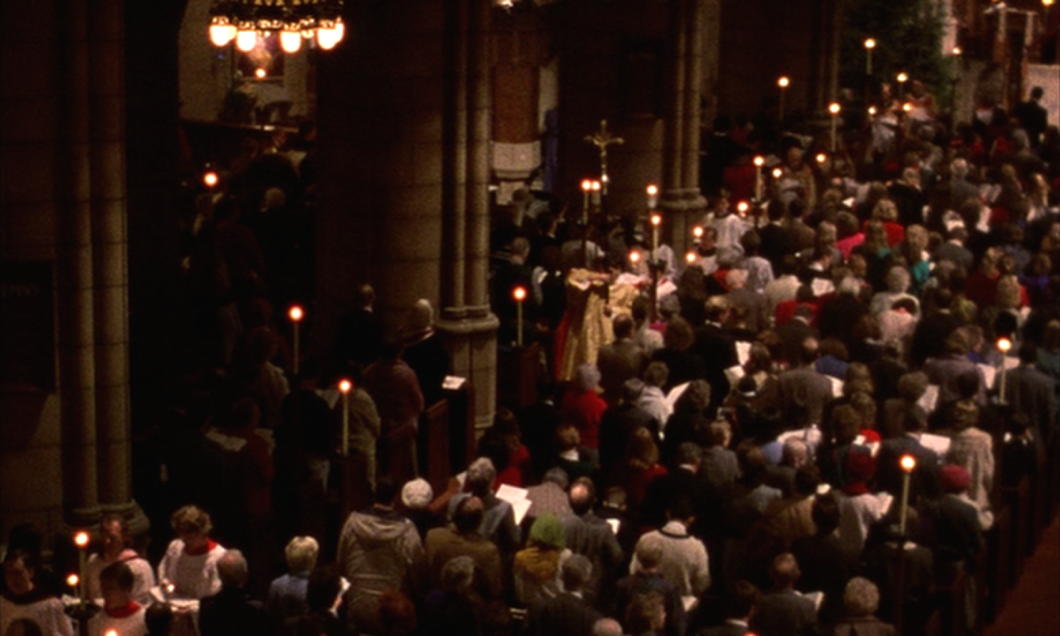
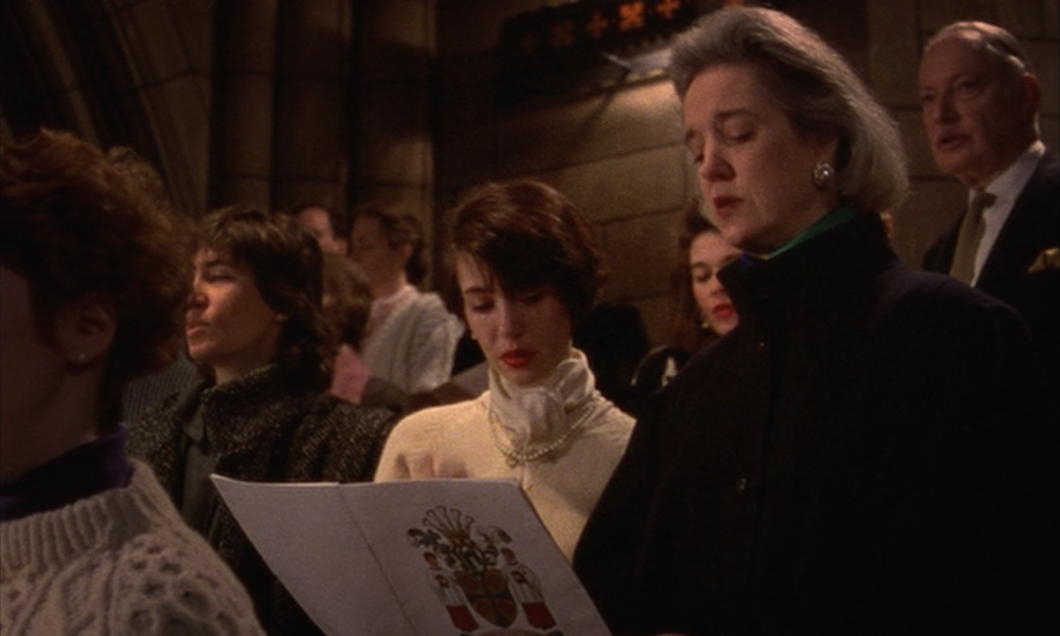
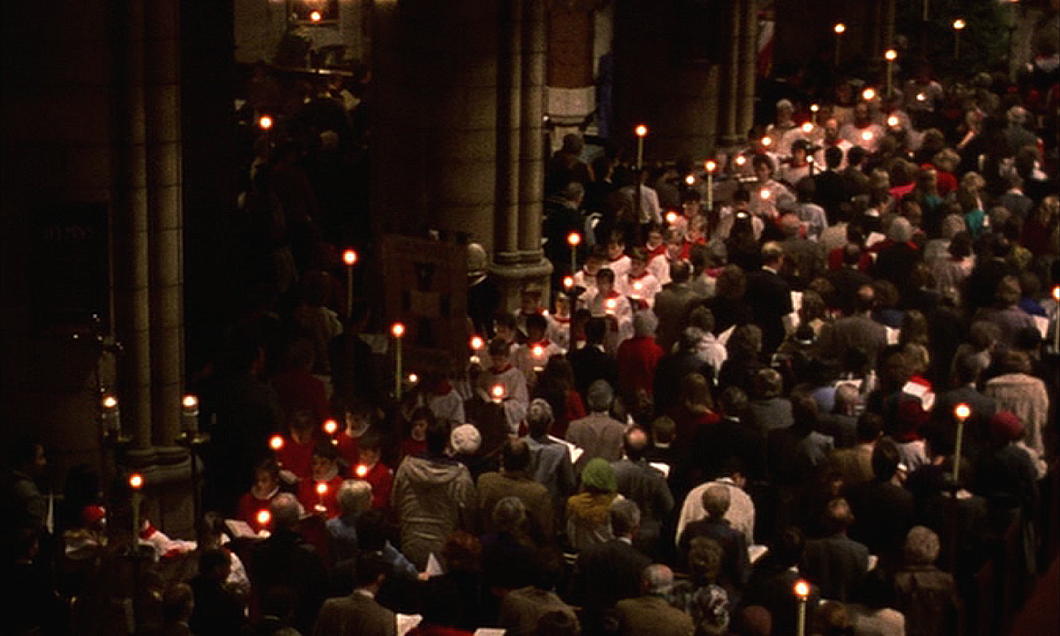
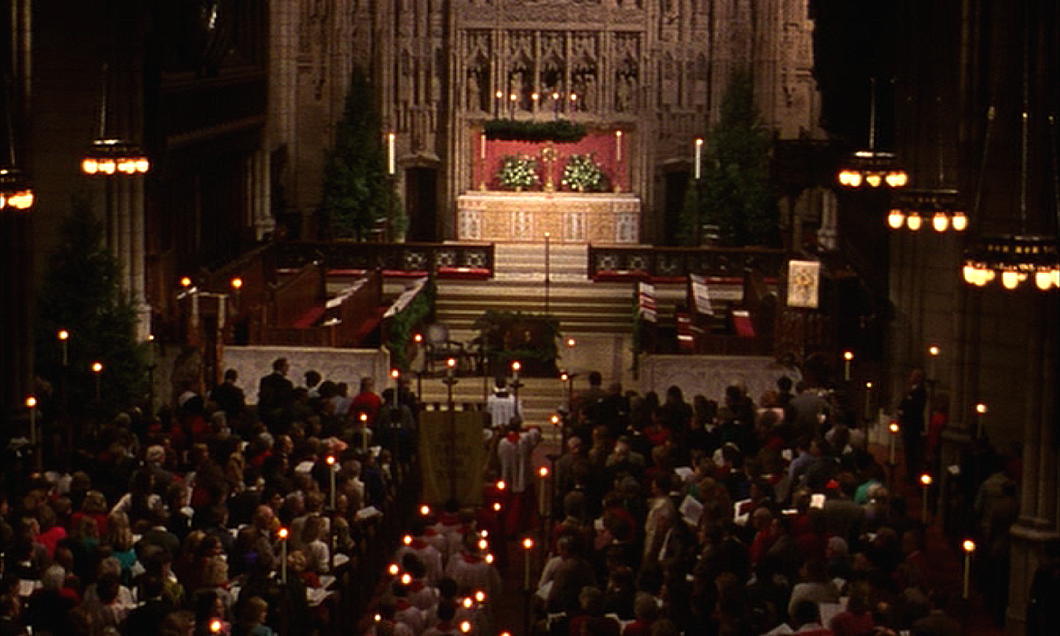
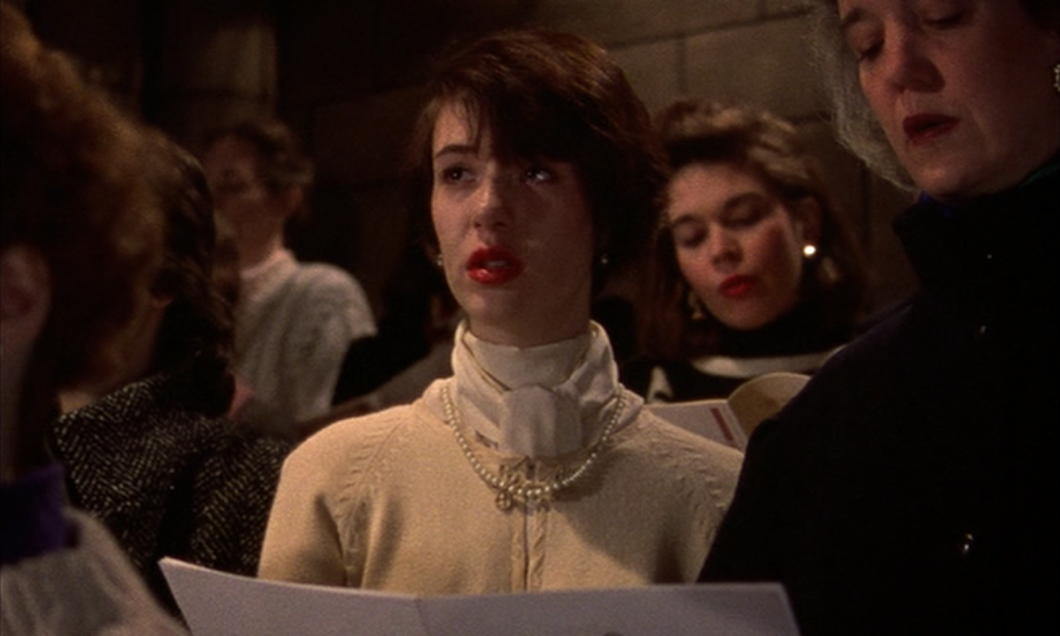
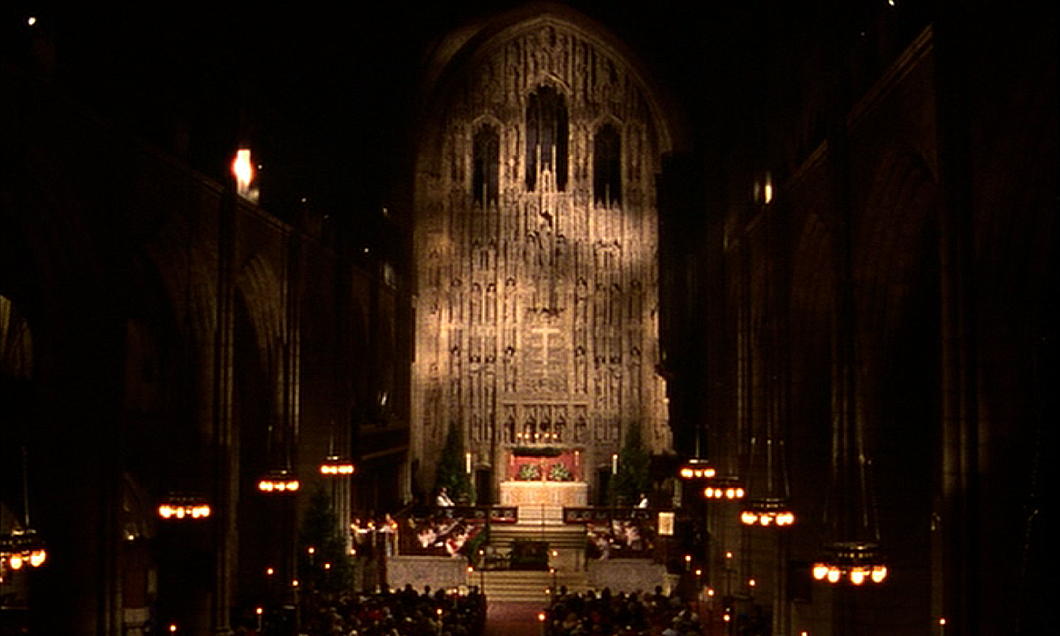
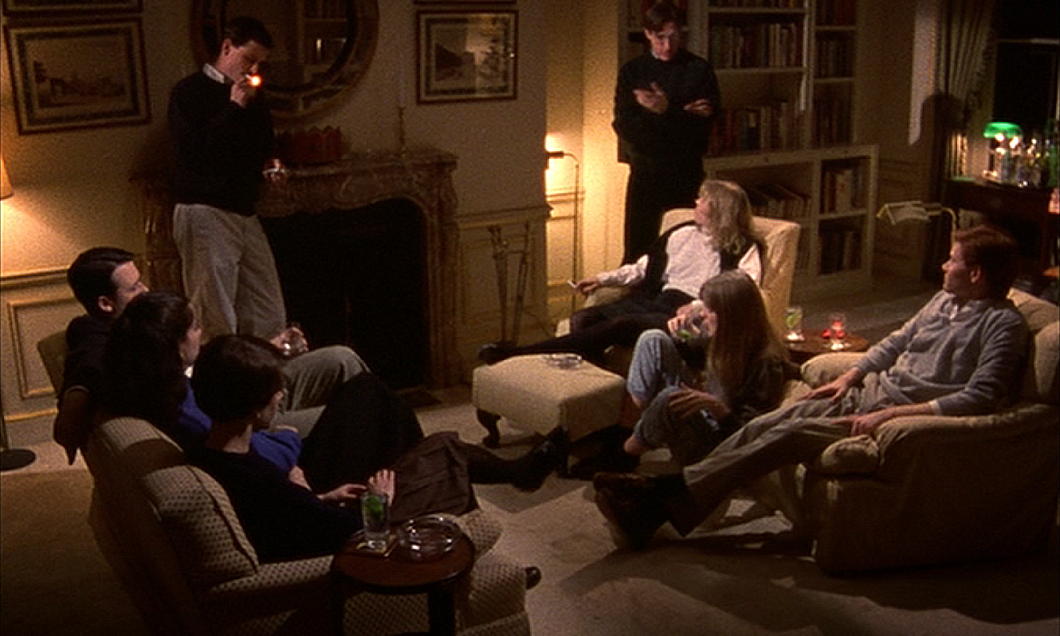
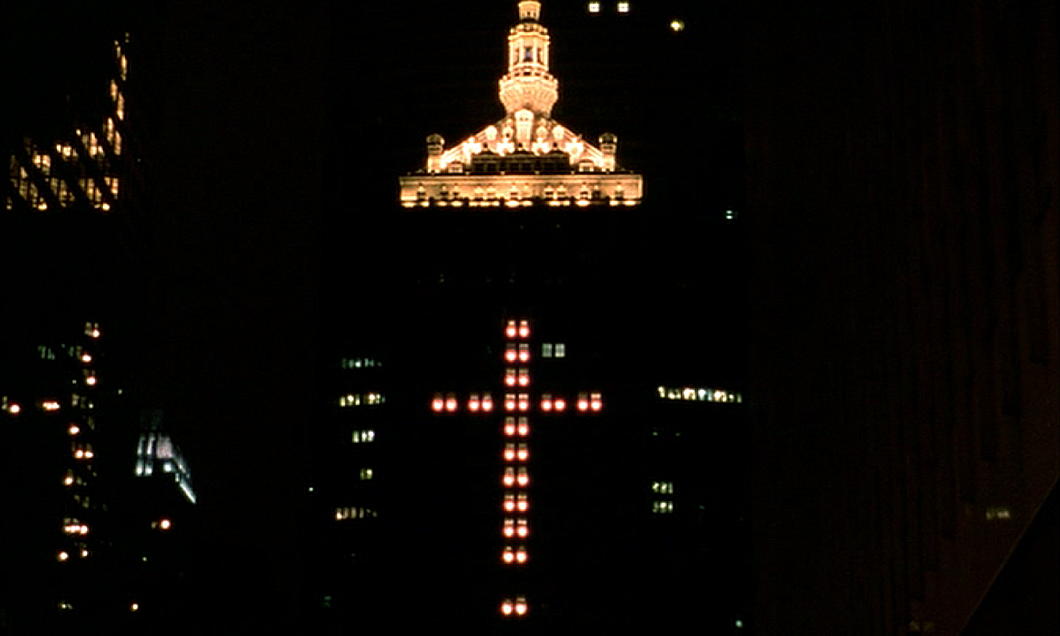
Hollandic Fever
Adapted from the Deborah Moggach novel of the same name, ‘Tulip Fever’ is a curious concoction. Some of the plot holes are so big you could drive a coach and horses through them. For example, how is it that – in Calvinist-controlled seventeenth-century Amsterdam – there is a massive Catholic convent perfectly accepted by everyone and operating as if nothing is out of place? It’s the size of Norwich Cathedral! (In fact, it is Norwich Cathedral – this entire production was filmed in Great Britain.)
The often excellent Chrisoph Waltz is curiously mismatched with his role here: a little bit too much of a parody of the proud, pious Amsterdam merchant in the start, which makes his eventual transformation a little unconvincing. The plot also shows little of the brilliance of its co-writer Sir Tom Stoppard. (In fact, there’s a bit too much plot.) At least Dame Judi Dench is effortless in her role as the unnamed Abbess of St Ursula. Tom Hollander is thrown in for a laugh, in a role suited to his abilities.
For curiosity’s sake the most interesting casting choice was Joanna Scanlan, known as the useless press officer at DOSAC in ‘The Thick of It’. Here she is the dressmaker Mrs Overvalt, but she was Vermeer’s cook Tanneke in ‘Girl with the Pearl Earring’. If my rudimentary calculations are correct, this means she has been in two-thirds of twenty-first-century films set in the Dutch seventeenth century.
It is, however, a beautifully shot production, for which I suspect we have the cinematographer Eigil Bryld to thank. (He’s worked on one seventeenth-century film before, and on another set in the Low Countries.) Bookended by scenes of Friedrichian romanticism (I’m into that) the film encourages me in my deeply felt belief that we need to revive seventeenth-century Dutch domestic architecture as a style.
“Get me ze Führer!”
Stereotypes of Nazi generals in British war films
“The reason for my uniform being a slightly different colour to yours
is never explained.”
The British are, of course, obsessed with the Nazis. There are many reasons for this, amongst which we must include the large number of really quite good war films produced during the 1950s and 1960s.
For some indiscernible reason these movies have the virtue of being eternally rewatchable and many a cloudy Saturday afternoon has been occupied by Sink the Bismarck!, Where Eagles Dare, or The Colditz Story.
The genre also deploys with a remarkable regularity a number of familiar tropes of ze Germans which the above clip from a British comedy sketch programme (introduced to me by the indomitable Jack Smith) aptly mocks.
‘Bon Voyage’
Jean-Paul Rappeneau’s ‘Bon Voyage’ (2003) is one of those superb films that come around all too rarely. It manages to balance perfectly all the elements of drama, comedy, action, and romance, set in a convincing historical context.
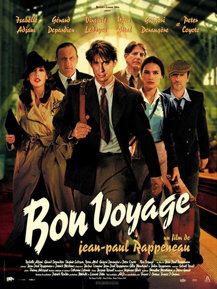
Bon Voyage
Jean-Paul Rappeneau
2003, France
1 hour 54 minutes
In 1940, Viviane Denvert (played by Isabelle Adjani) is a fickle, self-promoting film star who enlists her childhood friend, Frédéric Auger (Grégori Derangère), to extract herself from a compromising situation. As war creeps upon France, Auger finds himself behind bars for Viviane’s crime, but in the confusion of battle he manages to escape with the seasoned ne’erdowell Raoul (Yvan Attal). All of Paris is fleeing the German advance, and on the train to Bordeaux the two come across physics student Camille (Virginie Ledoyen) who helps them reach the western city by car when the train is stopped on the line.
In Bordeaux we come across government minister Jean-Étienne Beaufort, Viviane’s lover whom she uses to get Frédéric out of a sticky situation resulting from her own manipulation of him. Meanwhile, with all of Paris in Bordeaux, Viviane comes across another ex-paramour, Alex Winckler (Peter Coyote), keeping an unnatural interest in the affairs of the government, while the physics student Camille and her mentor Professor Kopolski are harbouring an important cargo they are determined must not fall into the hands of the Germans.
For fear of spoilers, that is all I will say about the plot, but it all comes packaged in a score by Gabriel Yared, better known for his scoring of ‘The English Patient’, ‘The Talented Mr. Ripley’, and Florian Henckel von Donnersmarck’s ‘Das Leben der Anderen’. The film was nominated for eight César awards in 2004 — best costumes, best director, best editing, best film, best original score, best sound editing, best supporting actor, and best writing — while it won three Césars that year for photography, best set design, and, for Grégori Derangère, best promising actor. (more…)
Films Recently Watched
In reverse chronological order, from the most recently viewed backwards.
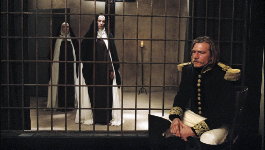
|
Ne touchez pas la hache (2007, France) — Based on Balzac’s La Duchesse de Langeais. I think we need more films set in Restoration France, but this one often fell flat. |
 |
Män som hatar kvinnor (2009, Sweden) — A journalist has six months to investigate the strange murder of a girl from the island estate of a prominent family. A very good mystery, though I had to fast-forward multiple times due to graphicness. Released in the U.S. as ‘The Girl With the Dragon Tattoo’ instead of ‘Men Who Hate Women’. |
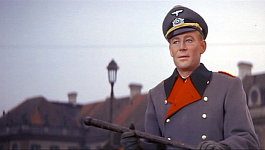
|
The Night of the Generals (1967, Great Britain-France) — A quality production depicting the quest of a German officer to obtain justice in arresting a sociopathic general for the murder of a Polish prostitute. Omar Sharif, Peter O’Toole, Philippe Noiret, Christopher Plummer, Charles Gray, and Tom Courtenay. |

|
Three Days of the Condor (1975, U.S.A.) — A literary analyst at a CIA front organisation returns to the office from lunch to find all his colleagues shot dead. Robert Redford and Max von Sydow. |

|
Le combat dans l’île (1962, France) — A right-wing extremist thinks he’s assassinated a prominent left-wing extremist but soon finds not all is as it appears. Romy Schneider plays the woman caught between the would-be murderer and his typographer friend. |

|
À bout de souffle (1960, France) — A rather lame romanticisation of a cop-murderer and his exploits from Jean-Luc Godard. Paris in the 1950s looks great though. |

|
Defence of the Realm (1985, Great Britain) — A newspaper exposes a Member of Parliament as a potential spy, but it turns out the story is much more complicated than first appearances would have it. Starring Gabriel Byrne, Ian Bannen, Greta Scacchi, Denholm Elliott, Bill Paterson, and Robbie Coltrane. |
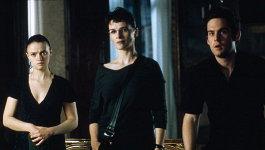
|
A Few Days in September (2006, France) — An intriguing spy drama set in the days leading up to September 11th, a French spy (Juliette Binoche) is minding the grown children of an old ex-C.I.A. agent (Nick Nolte) pursued by a psychotic assasin (John Torturro). |
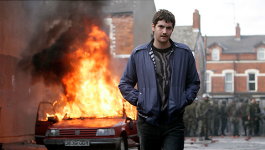
|
50 Dead Men Walking (2008, Great Britain-U.S.A.-Canada) — Based on the story of terrorist-turned-informer Martin McGartland, with Ben Kingsley playing his RUC handler. |

|
The Red Baron (2008, Germany) — A very light handling of an interesting historical character man. Everyone dresses well, but Joseph Fiennes as Billy Bishop, the Red Baron’s nemesis, is the least convincing fighter ace in history. |
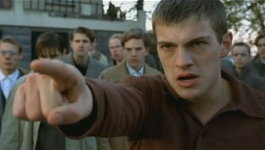
|
Ondskan (2003, Sweden) — A surprisingly good film in the boarding-school resistance-to-bullies category with a few twists, only slightly tinged by the socialism of the author of the novel on which it’s based. |

|
L’Heure d’été (2008, France) — Three siblings deal with their mother’s estate. |

|
Sink the Bismarck! (1960, Great Britain) — Cracking naval tale. A classic of the World War II genre. |
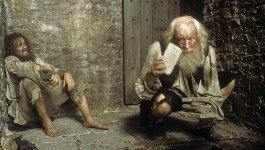
|
The Count of Monte Cristo (2002, U.S.A.) — Significant changes from the plot of the book besides the usual compression of the story line mar this film. Just not as worthwhile as the lavishly done 1998 French mini-series. |

|
On the Waterfront (1954, U.S.A.) — A priest tries to convince a mob lackey to testify against his bosses to challenge their murderous and abusive control of the waterfront. Particularly intriguing as the director was brave enough to challenge Hollywood communists in the 1950s. |
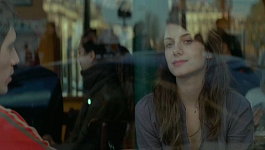
|
Paris (2008, France) — The interweaving lives of a handful of Parisians. I will see any film that has Juliette Binoche or Mélanie Laurent in it, and this film has both. Also with François Cluzet (of “Ne le dis à personne/Tell No One”) and Albert Dupontel. |
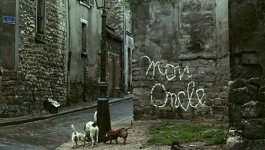
|
Mon Oncle (1958, France) — Jacques Tati’s first colour film, Monsieur Hulot continues to struggle with the postwar infatuation with modern architecture and consumerism. On its release it was condemned for its obviously reactionary world-view, but has since become a cult favourite. |
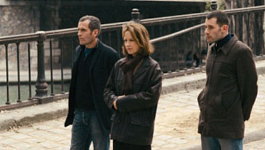
|
Le Petit Lieutenant (2005, France) — A young police recruit from the provinces joins a Parisian precinct and investigates a murder alongside his female unit commander, a recovering alcoholic. |

|
Les rivières pourpres (2000, France) — Jean Reno plays a police detective sent to a small university town in the Alps to investigate a brutal murder. Meanwhile, another detective (played by Vincent Kassel) looks into the desecration of the grave of a young girl. The plots soon become intertwined in an intriguing fashion. This film failed to live up to its potential (the university aspect could have been developed further) but is still a decent cop flick. |

|
Buongiorno, notte (2003, Italy) — The kidnapping of Aldo Moro by the Red Brigades. |

|
Flammen & Citronen (2008, Denmark) — Another good Scandinavian World-War-II resistance movie, alongside Norway’s “Max Manus” of the same year. (Previously covered here). Mads Mikkelsen (the Bond villain in “Casino Royale”) plays ‘Citronen’. |

|
Kontroll (2003, Hungary) — The ticket collectors of the Budapest Metro worry about a series of mysterious platform deaths. Varies between the comic, the thrilling, and the tiresome. |

|
L’homme du train (2002, France) — A man steps off a train planning to rob a bank, but strikes up a friendship with a retired poetry teacher. Jean Rochefort and Johnny Hallyday are a surprisingly good pairing. |

|
Advise and Consent (1962, U.S.A.) — The Senate must either approve or reject the President’s nomination for Secretary of State, but plots and intrigues are afoot. Otto Preminger does Washington, and does it well. |

|
The International (2009, U.S.A.-Germany-Great Britain) — A cracking conspiracy thriller staring Clive Owen as a stubborn Interpol investigator and Naomi Watts as a Manhattan Assistant D.A. Includes a fun shoot-out in the Guggenheim. |

|
Banlieue 13 (2004, France) — Parkour-heavy action film set in a Parisian crime ghetto of the near-future. |

|
Il divo (2008, Italy) — Biographical film of the seven-time Italian prime minister Giulio Andreotti. Toni Servillo’s portrayal of the main character, however, crosses the line into caricature. |
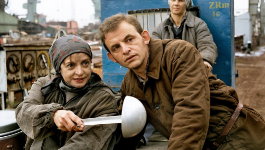
|
Strajk – Die Heldin von Danzig (2006, Germany-Poland) — A German film in Polish about the hardest-working employee at the Gdansk shipyards who finally takes a stand against the horrendous working conditions under the Communist regime. |
What a Sad, Sad Life to Lead
While innocently playing billiards in a friend’s basement towards the later years of my school days, I was inexplicably forced to endure the latter portion of an episode of the HBO television series “Sex and the City”. The show centers on four middle-aged women who refuse to settle down and lead reasonable, ordered lives but instead involve themselves in ever more flippant affairs and commit ever greater sins against their own dignity. It would be a welcome warning to women were it not for the obvious fact that the show’s intent is to glorify the sad, pitiable existence lived out by the four main characters.
The show originated from a column of the same name in the New York Observer, and after the success of the television series, a cinematic continuation was filmed, followed by a more recent sequel.
Brendan O’Neill, a liberal atheist if ever there was one, has written a superb commentary on the second “Sex and the City” film, claiming that this “execrable” movie “offers an accidentally fascinating insight into the crisis of American values”. Click here to read O’Neill thoughts on the film and its sad reflection of today’s America, and say a little prayer that no-one really leads lives as self-centered, sad, and just plain pitiable as the characters involved.
“Lourdes”
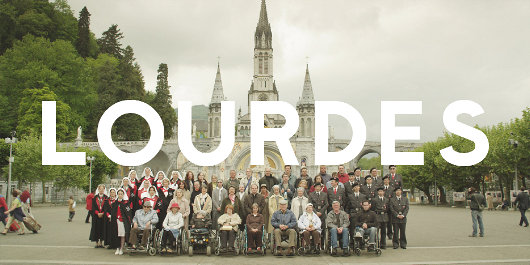
Various sources have brought to light the new film “Lourdes” by the Austrian director Jessica Hausner. The film depicts the pilgrimage to Lourdes of a non-particularly religious woman (played by Sylvie Testud) suffering from Mutiple Sclerosis who is healed of her illness. The film by a non-believing director has met with both praise and suspicion from Catholic quarters, and has been compared, at least stylistically, to the work of Michael Haneke (whose latest, “The White Ribbon” is currently showing in New York). Latest to weigh in is the Catholic Herald‘s indispensable Anna Arco, who writes:
I saw it as an exercise in theodicy where God loses. In a quiet dispassionate way, Jessica Hausner, the film’s Austrian director, paints a bleak picture of a world where fate is a blind, arbitrary force and human beings clutch at the straws of faith, half-truths in their cowardly despair. The suffering are not healed, human nature is selfish and the problem of pain is not solved. God can’t exist because he isn’t fair. Christianity offers a web of half-truths obscuring a nihilistic reality.
Miss Arco recently spoke with the director, and the interview will be published in the next Catholic Herald. (more…)
La Grande Séduction
This is a perfectly charming film. “La Grande Séduction” comically celebrates the dignity of work and the assault on the human character that inevitably results from reliance upon government welfare for survival. The inhabitants of the small fishing village of Ste-Marie-La-Mauderne have refused to abandon their homes after the collapse of fishing, but lack the resident doctor a potential investor requires in order to build his factory in the town. “La Grande Séduction” (released in Anglophone cinemas as “Seducing Dr. Lewis”) depicts the efforts of prominent townsfolk to unite and persuade the arrogant city-slicker Dr. Lewis to sign up as doctor for their little corner of the world.
Fans of “Local Hero” or “Waking Ned Devine” will find the theme familiar, but with a remote corner of maritime Quebec substituting for the Celtic hinterlands of the British Isles. If anything, the film allows the viewer an opportunity to hear that charming Québécois back-country accent. There are also elements that will grate somewhat the prudish tendencies of Anglos like us, but one must make allowances for the Latin temperament that survives in la Nouvelle-France and the other Romance realms.
Overall, a celebration of place, work, and community, and an interesting exploration of the conflict between artificiality and authenticity.
The Diogenes Club

“There are many men in London, you know, who, some from shyness, some from misanthropy, have no wish for the company of their fellows,” says Sherlock Holmes in The Greek Interpreter. “Yet they are not averse to comfortable chairs and the latest periodicals. It is for the convenience of these that the Diogenes Club was started, and it now contains the most unsociable and unclubable men in town. No member is permitted to take the least notice of any other one. Save in the Stranger’s Room, no talking is, under any circumstances, allowed, and three offences, if brought to the notice of the committee, render the talker liable to expulsion. My brother was one of the founders, and I have myself found it a very soothing atmosphere.” (more…)
Max Manus
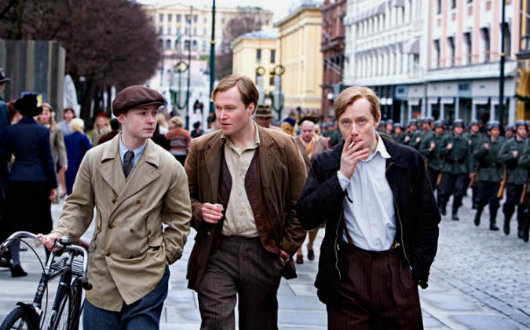
WHEN I WROTE about the Danish film “Flammen et Citronen” in July, I mentioned that it’s not very often that a big-budget period film comes out of Scandinavia, but that recently there’ve been not just one, but two. Readers may have been wondering about the other film which remained unmentioned. I caught the single showing of “Max Manus” during Norwegian Film Week (actually a fortnight) at Scandinavia House on Park Avenue here in New York. This was undoubtedly one of the best films I’ve seen all year, vying with “The Baader-Meinhof Complex” for the top position.
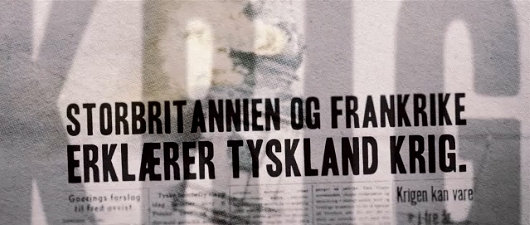
The film begins with newspaper headlines showing the increasingly precipitous situation in Europe from the beginning of the Great Depression onwards. Germany’s economy is ruined and inflation is rampant, Hitler rises to power, Hitler and Stalin invade and divide Poland, Great Britain and France declare war on Germany, and finally Stalin invades Finland. The eponymous hero of our film, Max Manus, is Norwegian but volunteers to fight for Finland when it is invaded by its Nazi-aligned totalitarian neighbour the Soviet Union in the Winter War of 1939-1940. (more…)
Life of St. Hildegard Hits the Silver Screen
But is it the Hildegard of historical fact or modern fantasy?

THE LIFE OF Saint Hildegard von Bingen — the Benedictine nun, writer, scientist, physician, and poet perhaps best known as a composer — has been brought to the screen in a new German-produced film. “Vision – Aus dem Leben der Hildegard von Bingen” was released in Germany & Austria in September and may receive a wider European release in 2010. From the voluntary confinement of the cloister, this woman corresponded with the Emperors Lothair II and Frederick Barbarossa, the popes Eugene III and Anastasius IV, the great patron of art Abbot Suger, and of course the great Cistercian reformer St. Bernard of Clairvaux. Hildegard was authorised to go on four preaching tours, and her Ordo Virtutum was the first allegorical morality play of the medieval period. She even invented a demi-language, Lingua Ignota (“unknown language”), and created an alternative alphabet in which to write it. (more…)
Flammen & Citronen

IT’S NOT VERY OFTEN that a big-budget period film comes out of Scandinavia, but recently there’ve been not one, but two. Here mentioned is the Danish film “Flammen & Citronen”, an action-drama based on the Second World War actions of Bent Faurschou-Hviid (nicknamed “Flame”) and Jørgen Haagen Schmith (“Citron”). Faurschou-Hviid and Schmith were members of the Holder Danske group, a Danish resistance organization primarily composed of Danes who had previously fought for Finland against the Soviet Union in the Winter War of 1939-1940. (more…)
Fake Newspapers: “Bright Young Things”
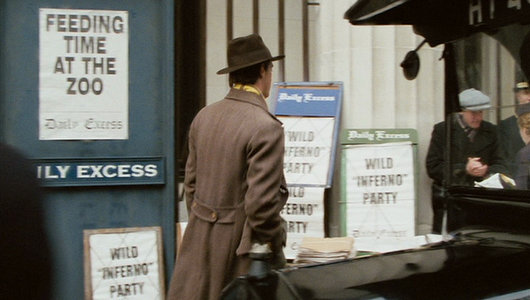
When it comes to newspapers, the visual element is all-important to an extent that shockingly few in the powerful parts of the industry comprehend. In the county of Westchester — my home turf — there is a monopoly when it comes to the newspaper as a means of local information delivery, and that monopoly belongs to the Gannett chain. Gannett newspapers are among the ugliest in the country, but then most American newspapers are abominations when it comes to design. The glory days of newspapers were, of course, the 1920s & 30s, and Stephen Fry’s film “Bright Young Things” — a rejigged dramatisation of Waugh’s Vile Bodies — highlights, as many Waughvian tales do, newspapers as a central plot instrument.
Russia Turns a Cinematic Page in History
Big-budget film celebrating anti-Communist hero & White Russian leader Admiral Kolchak is partly funded by Russian government
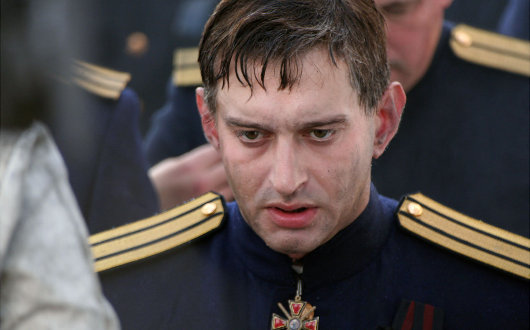
Here’s a film that has it all: naval battles, mutiny, revolution, civil war, brave men, beautiful women, sin, sacrifice, and betrayal on multiple levels. But “Admiral” («Адмиралъ»), which opened in Russia this month, is notable for another reason: this is the first major film depicting the tsarist White Russians as the good guys to receive at least part of its funding from the Russian government. The eponymous hero of the film is Alexander Kolchak, the naval commander and polar explorer who later led part of the White Army fighting the Bolsheviks during the Russian Civil War.
Search
Instagram: @andcusack
Click here for my Instagram photos.Most Recent Posts
- How to Make a Pope April 24, 2025
- Faithful Shepherd of the Falklands April 8, 2025
- Articles of Note: 8 April 2025 April 8, 2025
- Proportionality Destroys Representation April 8, 2025
- Sag Harbor Cinema March 26, 2025
Most Recent Comments
Book Wishlist
Monthly Archives
Categories

